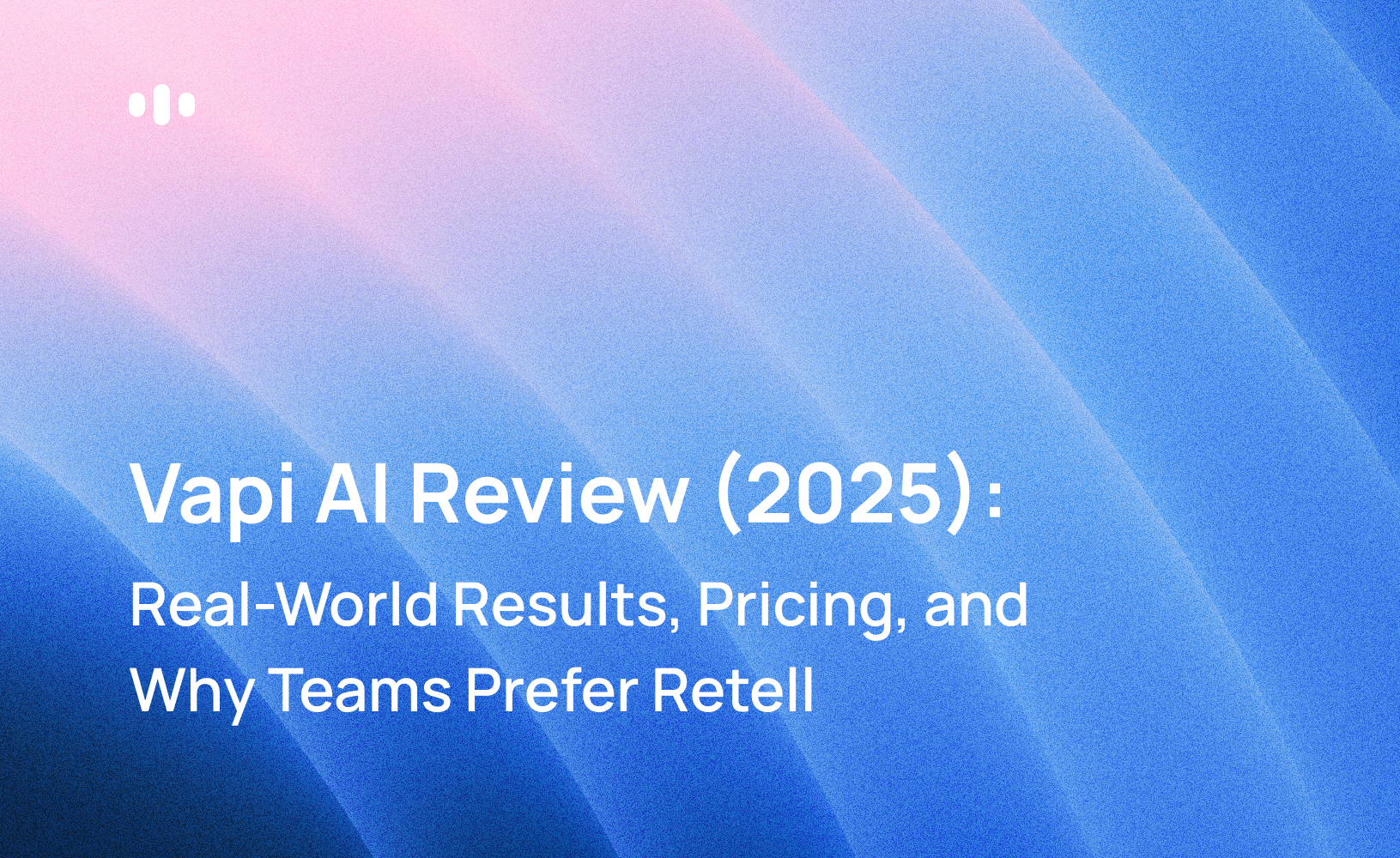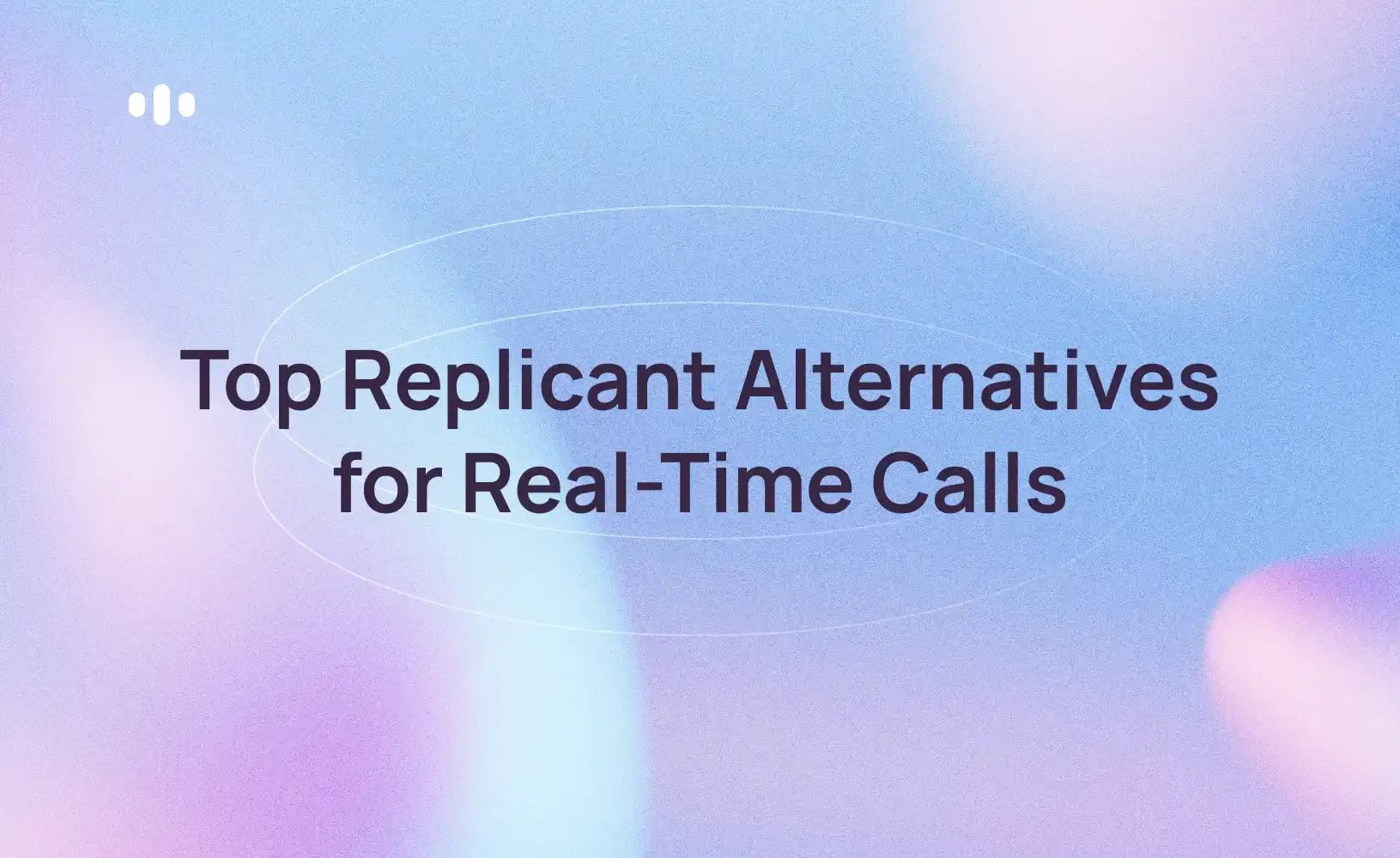Picking the right conversational AI platform is a strategic decision. Conversational AI platforms are tools that leverage artificial intelligence for customer support and automation, enabling businesses to improve efficiency, automate workflows, and scale support operations. At Retell, we’ve seen how the right choice can completely reshape how teams handle customer interactions, automate workflows, and scale support operations.
Sierra has gained plenty of attention with its vision of brand-aligned, action-oriented agents. It’s an ambitious approach, but like any emerging platform, there are still questions around pricing transparency, scalability, and voice maturity.
In this article, I take a closer look at what Sierra does well, where it still has room to grow, and how it compares to other players in the space. The ecosystem is diverse: Cognigy and Kore.ai stand out for complex enterprise workflows, PolyAI for its lifelike conversational quality, and Retell AI for ultra-low latency voice automation and transparent, usage-based pricing.
We’ll focus on identifying the best Sierra for your needs and evaluating each Sierra alternative to help you find the most suitable solution for your business.
This article will help you understand the fast-evolving conversational AI landscape, clarifying where Sierra fits, what its main strengths and trade-offs are, and how it compares with leading alternatives.
Sierra is an enterprise conversational AI platform that enables companies to deploy intelligent agents for customer-facing interactions. Among AI platforms designed for customer service, Sierra stands out for its ability to automate and enhance customer conversations at scale.
Its focus is on creating AI systems that can communicate in natural language while also performing practical tasks, such as checking account information, processing requests, or updating internal systems.
Instead of functioning as static chatbots, Sierra’s agents are designed to act more like digital employees: brand-aligned, context-aware, and capable of connecting to business applications.
Conversational AI refers to technologies that allow machines to engage in human-like dialogue across channels such as phone, chat, or messaging apps. A complete solution typically combines:
For enterprises, conversational AI is about delivering reliable, scalable, and compliant experiences that reduce operational load and strengthen customer relationships. As a customer service platform, Sierra leverages advanced AI capabilities and advanced features to support complex customer conversations and drive superior support outcomes.
When evaluating conversational AI for industries like healthcare, finance, insurance, or logistics, the expectations are extremely high. When considering solutions, it’s important to look at the key features that each platform offers to meet enterprise demands. At enterprise scale, even small gaps in performance, reliability, or compliance can make or break adoption.
In short, building enterprise-ready conversational AI isn’t just about LLMs or features, it’s about delivering a secure, reliable, and human experience that scales as the organization does. The right platform can streamline operations and deliver scalable automation to meet the needs of modern enterprises.
We’ve found Sierra to be one of the more forward-thinking platforms in the conversational AI space. Its focus on brand-aligned, autonomous agents has earned attention from a lot of enterprise teams.
That said, once you move past early pilots and start testing Sierra in real production environments, a few trade-offs become clearer. Some organizations may seek a sierra ai alternative or explore sierra ai alternatives to address these gaps and find solutions with enhanced features, better integration, or improved analytics.
They’re not necessarily deal-breakers, but they do highlight some structural limitations that any buyer should keep in mind before going all-in on the platform:
Sierra promotes outcome-based pricing (charging when an AI agent resolves a case) rather than listing public, metered plans.
This differs from other pricing models, such as transparent pricing or custom pricing, where costs are clearly outlined or tailored based on usage volume and specific business needs.
That can align cost with value, but it also shifts forecasting to modeled “resolution rates”, which finance teams and analysts flag as harder to baseline and attribute.
Sierra added voice in late 2024 and has continued to roll out voice-specific tooling. That progress is real, but it also means voice is a more recent investment vs. long-standing chat, so expect a steeper learning curve in telephony, barge-ins, jitter, accents, and QA until your own sims validate performance. Some competitors, however, already offer mature voice assistants that deliver natural sounding conversations from the start, enabling more seamless and human-like interactions for customer service and healthcare use cases.
Because Sierra positions an end-to-end Agent OS rather than a thin integration layer, core workflows may be rebuilt inside its platform.
That centralization can raise switching costs later. If portability matters, negotiate data/export rights and outcome definitions up front. Some AI customer support alternatives support offer more flexibility for organizations that use various customer service platforms or for existing Intercom users who want AI tools tailored to their current workflows.
Outcome deals require precise outcome definitions, instrumentation, and rules for edge cases. Consulting and billing leaders note that OBP often prolongs sales cycles and complicates revenue predictability unless paired with floors/caps. Build time into procurement and finance modeling. It is also important to engage with the vendor's sales team during procurement to clarify terms and ensure smooth customer support operations, especially when integrating advanced features into key tools.
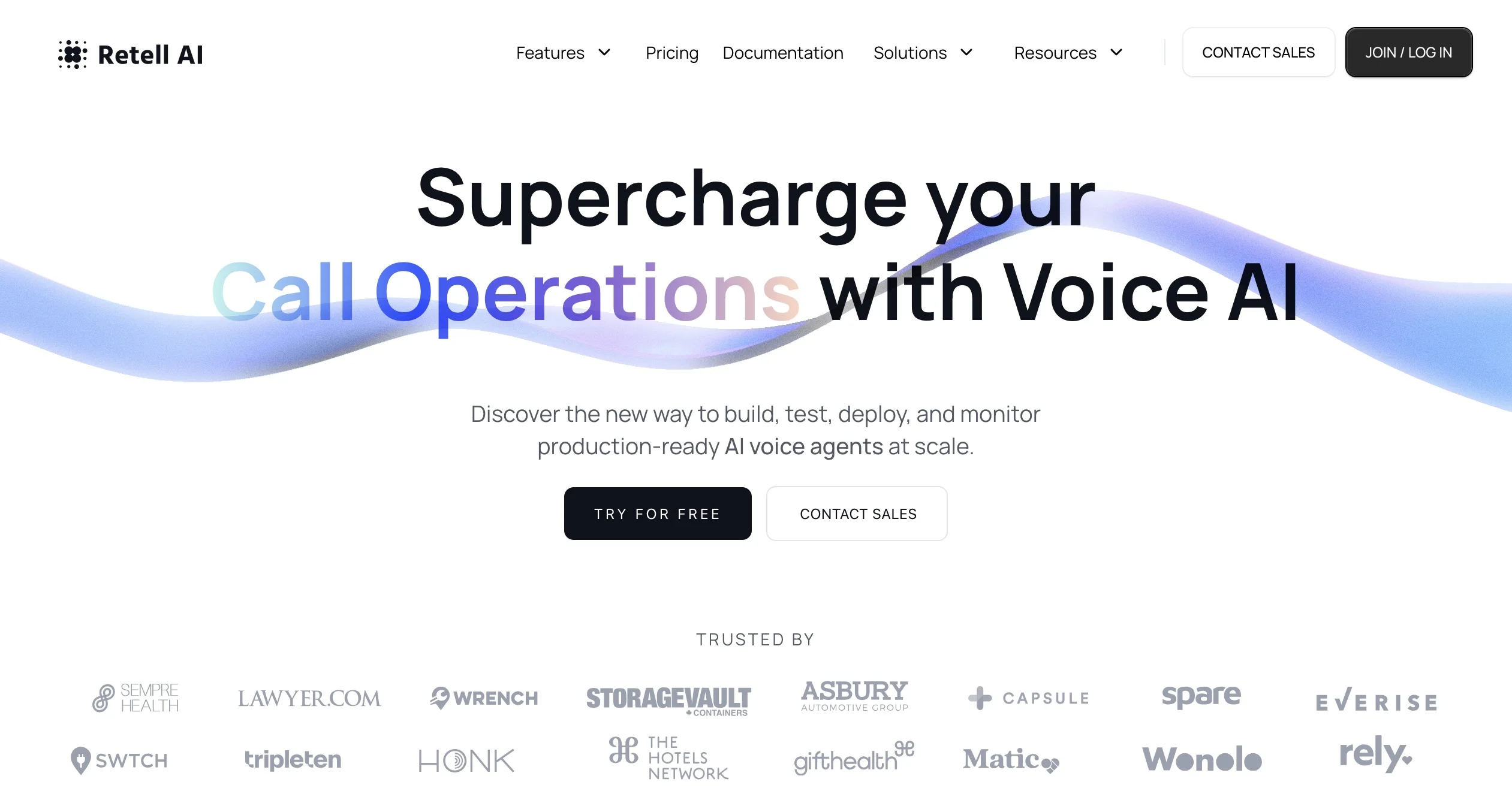
Retell AI is a voice-first conversational AI platform built for real-time, low-latency phone interactions, ideal for AI receptionists, inbound routing, and customer-facing voice automation.
These AI-powered platforms help automate customer interactions, improve customer engagement, and support support agents by reducing repetitive tasks. They support a variety of messaging channels and enhance customer communication across touchpoints.
It offers natural-sounding voice agents, API integrations, and transparent infrastructure for managing concurrency and scaling. Unlike platforms that started with chat and later added voice, Retell was designed from the ground up for live calls, making it especially reliable in telephony-heavy environments.
Transparent, usage-based pricing. The cost is around $0.07 per minute for high-quality voices, plus LLM inference costs and standard telephony rates (~$0.015/min). Discounts are available at higher volumes.
G2 Rating: 4.8/5 (612 reviews)
Review: "Retell AI has completely transformed the way we manage automated calls, with impressive voice quality and understanding".
Enterprises in healthcare, finance, logistics, or home services that rely heavily on phone calls and need a voice AI solution that balances quality, scalability, and predictability.
Build your first Retell agent in minutes for free.
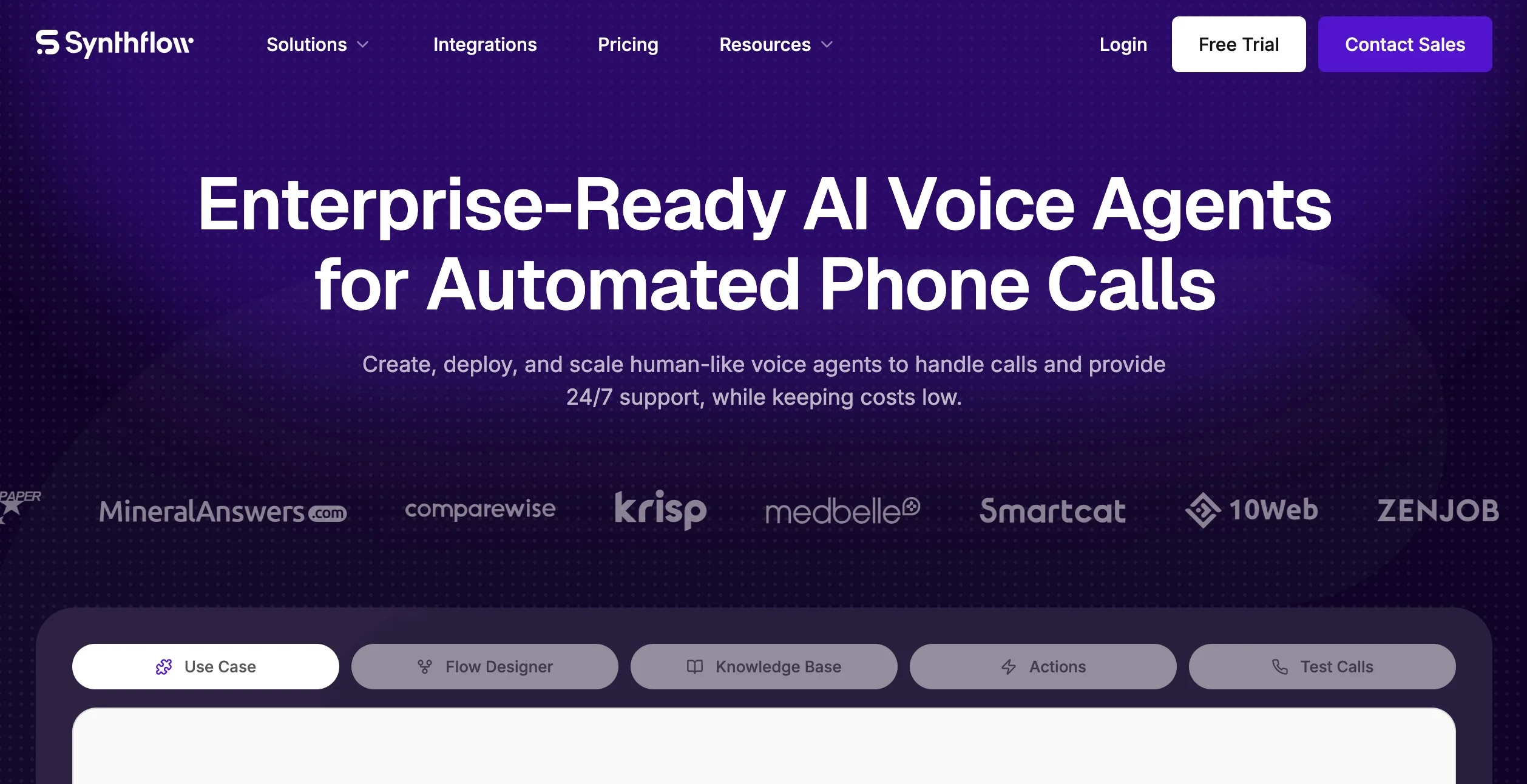
Synthflow is a scalable voice AI with a no-code visual workflow builder, real-time personalization, and deep CRM integrations. Supports HIPAA compliance, inbound routing, and multi-tenant management for agencies. Designed for production-grade voice automation.
Starter plan starts at $29/month for 5,000 minutes and 1 agent. Growth at $99/month includes 20,000 minutes and unlimited agents. Scale plan at $249/month supports 60,000 minutes. Custom enterprise pricing available.
G2 Rating: 4.5/5 (815 reviews)
Review: "What I like best about Synthflow is that it doesn’t bury you in technical complexity. You don’t need to be a coder or spend weeks wiring together APIs just to get a usable AI voice agent".
Marketing teams and enterprises needing robust inbound support automation with compliance needs and deep integrations.
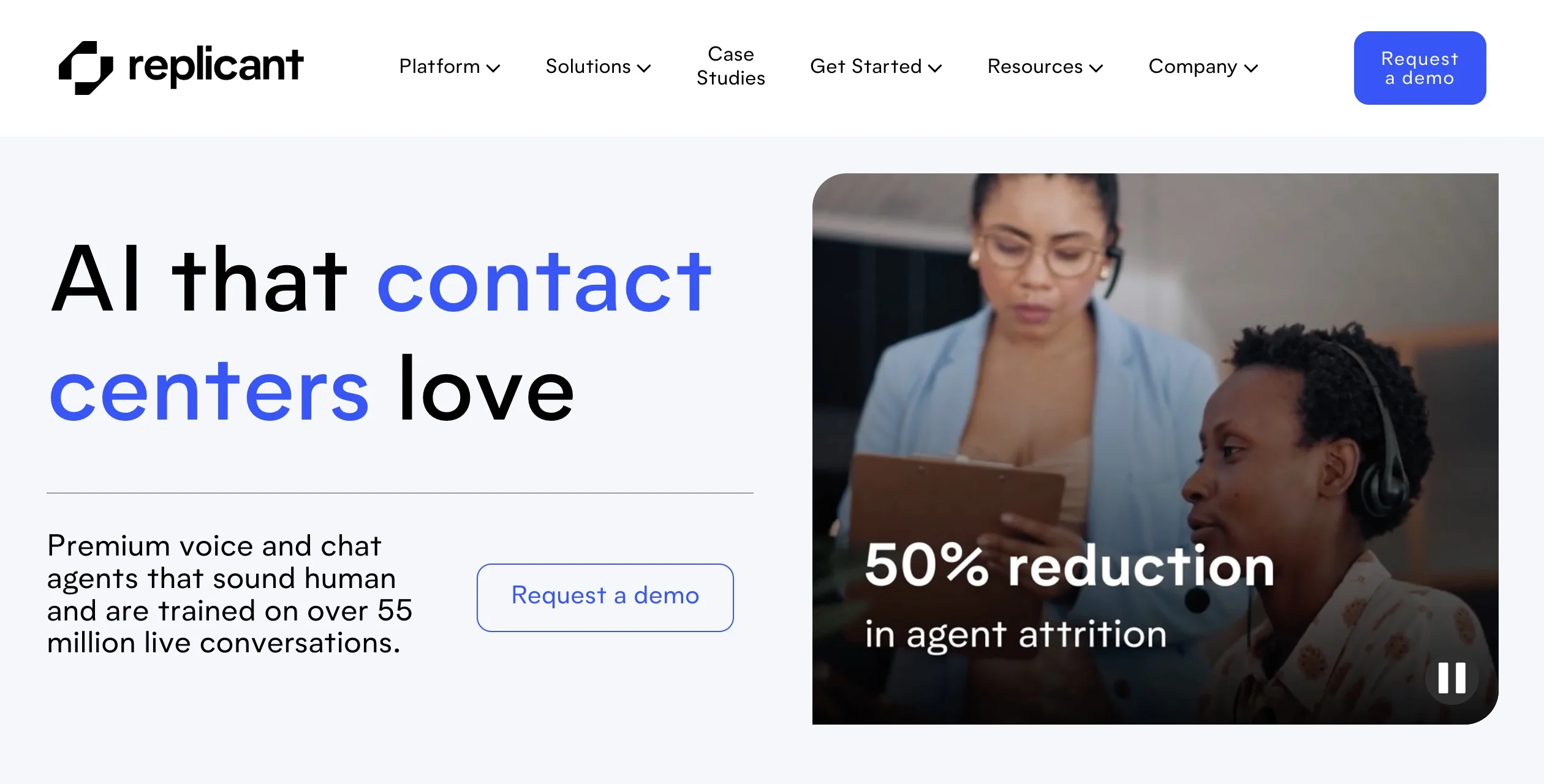
Replicant is an enterprise-grade automation platform for contact centers.
Its “Thinking Machine” resolves Tier-1 customer calls autonomously, escalates to live agents when needed, and integrates with backend systems to complete workflows. The platform includes analytics and conversation intelligence tools for optimizing performance at scale.
Replicant does not publish pricing publicly. Engagements are structured as enterprise contracts, tailored to call volumes and complexity.
G2 Rating: 4.7/5 (45 reviews)
Review: "The team is quick to reply if there are any technical concerns and is open to feedback. They usually respond within an hour when a ticket is sent in".
Large-scale contact centers that want to automate high call volumes end-to-end, with the support of an established vendor in the voice automation space.
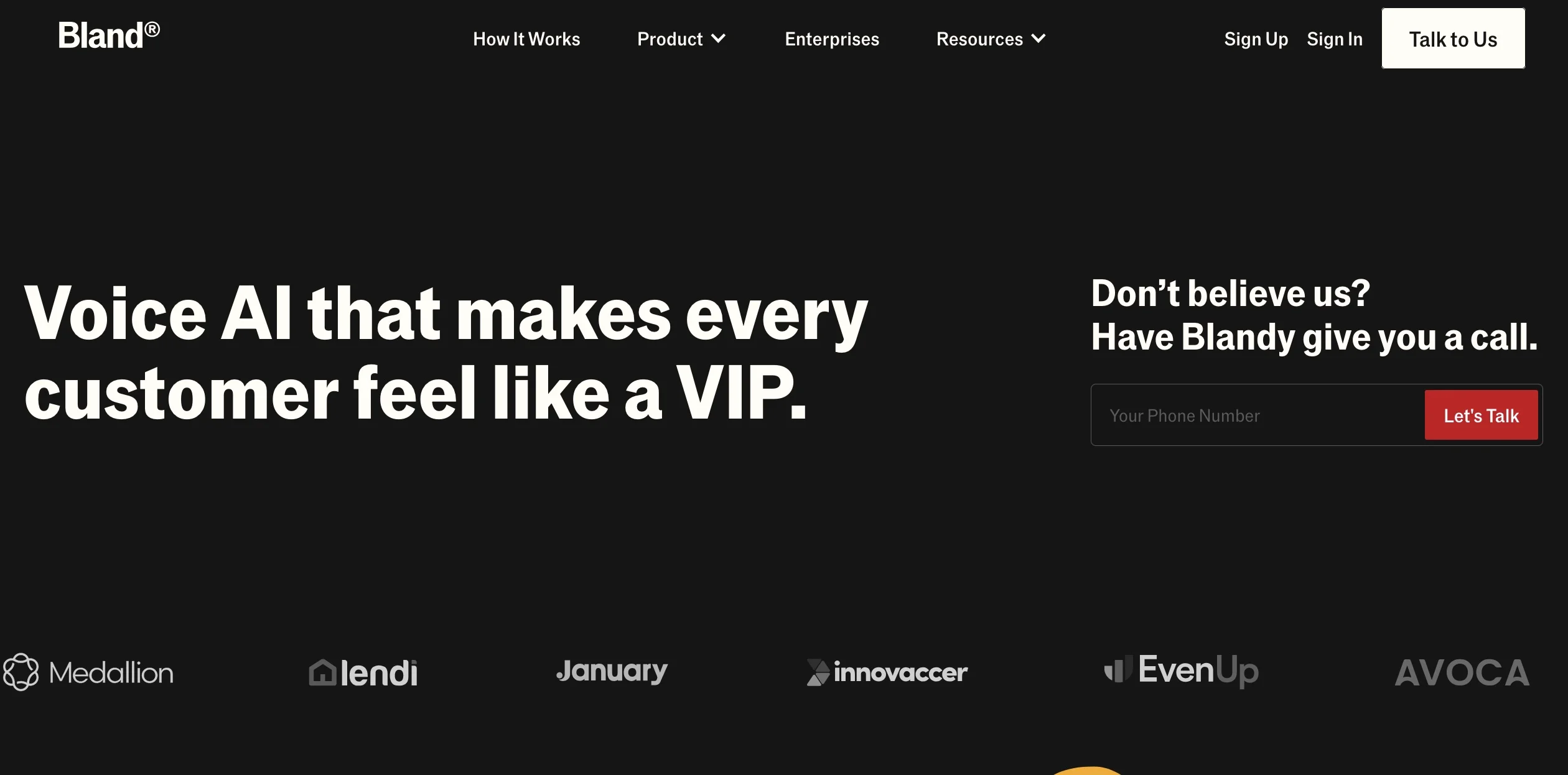
Bland emphasizes hyper-realistic voice experiences with strong security and data governance. It supports high-volume inbound and outbound calling, SMS, and omnichannel workflows. Bland markets itself as capable of scaling up to one million concurrent calls, making it attractive to enterprises that demand resiliency.
No public pricing. Bland generally positions itself at the enterprise tier, with costs reflecting its scale and customization focus.
Product Hunt Rating: 3/5 (10 reviews)
Large enterprises with strict requirements for privacy, governance, and brand voice customization at scale.
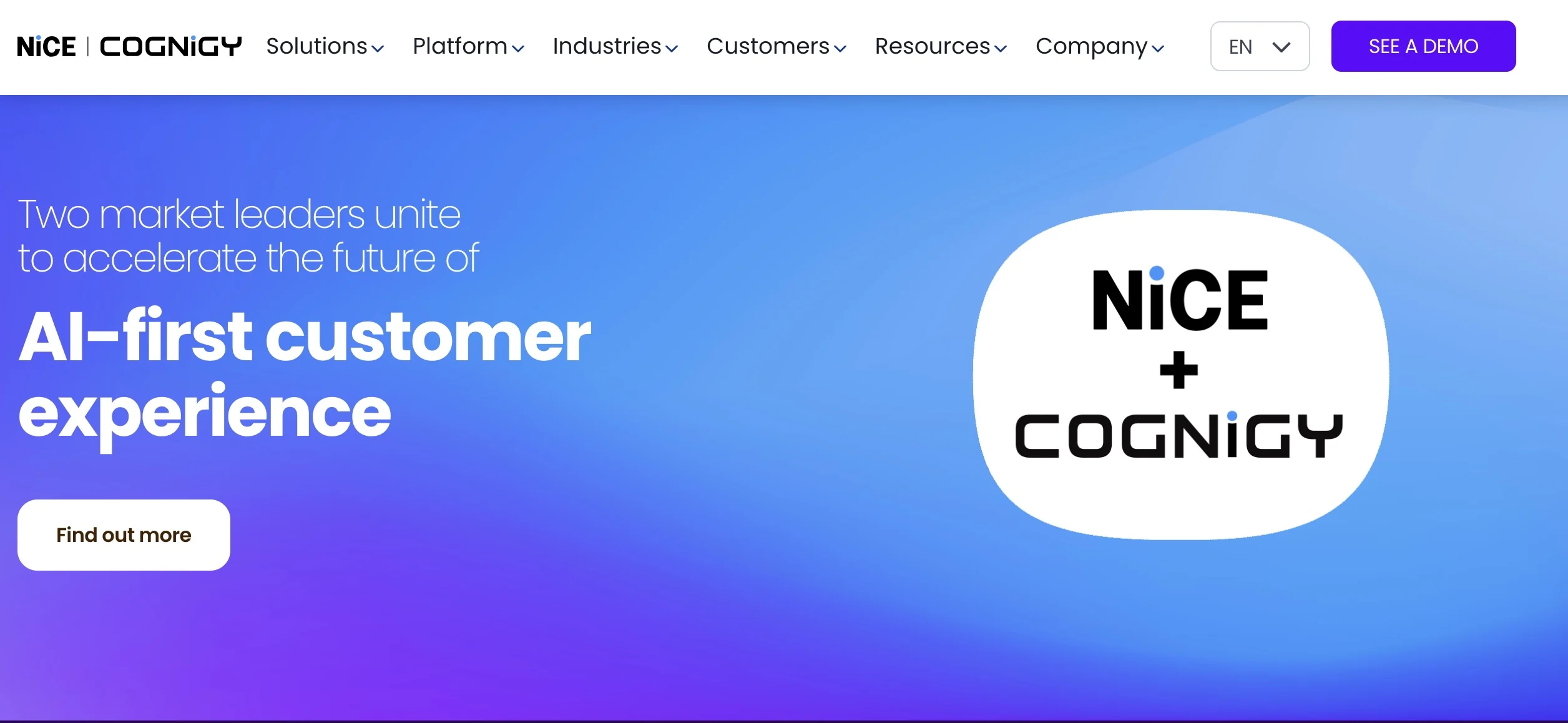
Cognigy is a conversational automation platform built for complex, enterprise-grade deployments.
It supports voice and chat channels, advanced orchestration, multilingual interactions, and customizable workflows, making it a flexible option for multinational organizations.
Enterprise licensing, typically customized to deployment scale and channel usage. Pricing is not publicly listed.
G2 Rating: 4.6/5 (13 reviews)
Review: "Overall I loved it but I must mention that it does not support an extensive workflow".
Global enterprises with complex workflows, multiple channels, and a need for deep orchestration across languages and regions.

Kore.ai provides a platform for building intelligent virtual assistants across voice, chat, email, and social media.
Its low-code design tools, built-in NLP, and analytics capabilities make it a versatile option for teams that want to reduce engineering lift while maintaining enterprise-grade functionality.
Kore.ai offers tiered plans (e.g. Essential, Advanced, Enterprise), where only the top tier is custom-priced.
They also charge for model compute via “model credits” as part of infrastructure usage. For large deployments, especially in voice or agentic AI, pricing is negotiated case by case, with usage, concurrency, channel mix, and features all influencing the final quote.
G2 Rating: 4.3/5 (12 reviews)
Review: "User friendly, fast and many supported languages. Very complex setup process and more bugs then competitors".
Organizations that need a balanced multichannel solution with lower setup overhead and strong low-code capabilities.

PolyAI specializes in natural-sounding voice agents for high-volume customer interactions.
Its technology focuses on speech quality, multi-accent support, and conversational resilience, making it popular for businesses where customer experience on the phone is paramount.
PolyAI uses a custom, usage-based pricing model. Its official site states that ongoing voice assistant use is billed per minute (this includes performance upkeep, maintenance, and 24/7 support).
For large contracts, published AWS Marketplace data shows a 500,000-minute annual commitment priced at $175,000. Because rates are negotiated case-by-case, interested clients must request a quote.
G2 Rating: 5/5 (11 reviews)
Review: "There are many options for AI currently in the market. PolyAI impressed us by providing a product that could be launched in a short amount of time without risking quality".
Service-heavy industries (hospitality, travel, retail, banking) where customer trust depends on smooth, natural voice interactions.
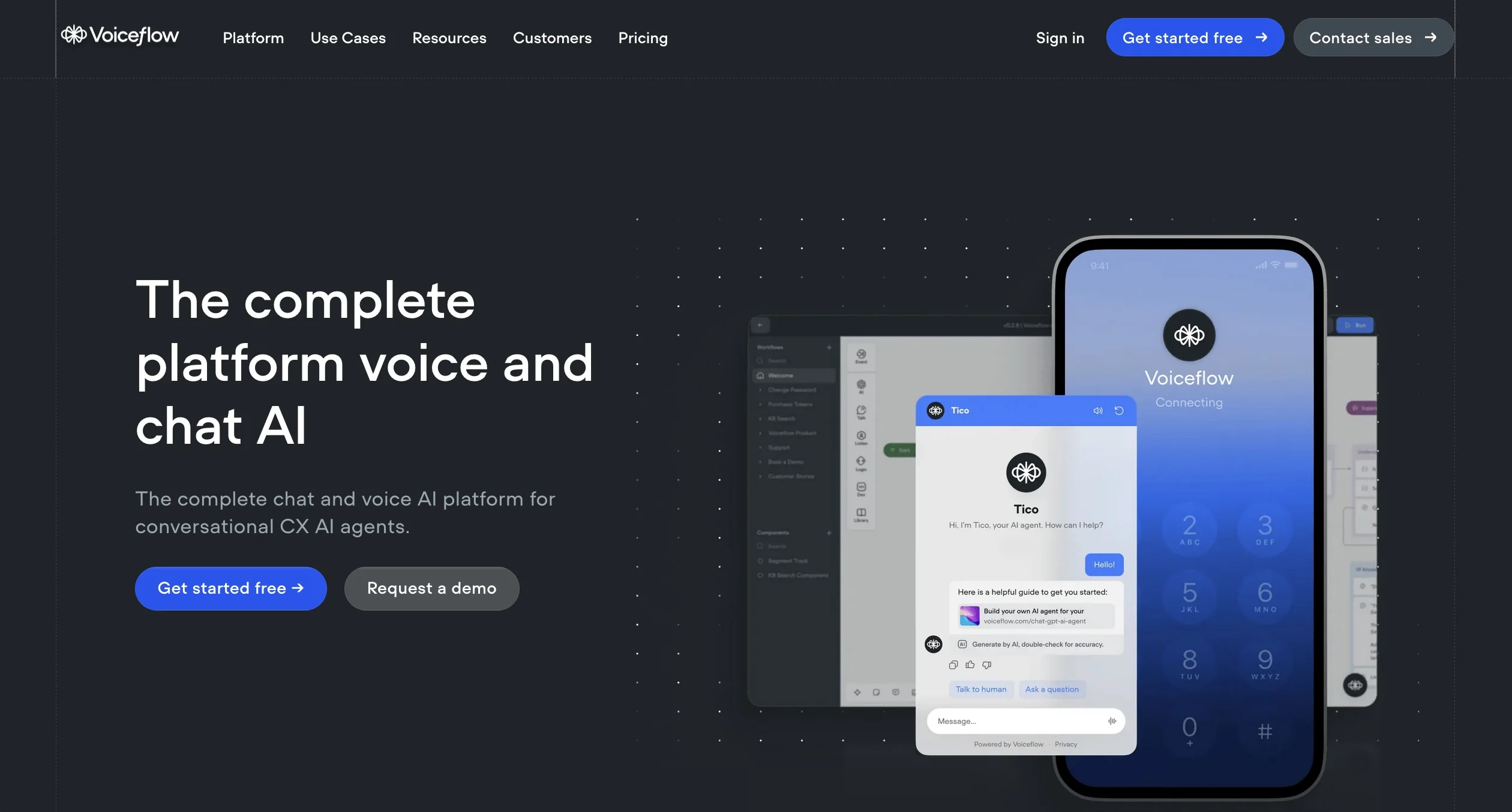
Voiceflow is a leading no-code platform for designing conversational workflows across both voice and chat.
It excels in prototyping and collaboration, allowing teams to co-design flows, manage knowledge bases, and test experiences before launch.
Voiceflow offers a free plan for basic usage. The Pro plan starts at $60 per editor/month for up to 20 agents, while the Business plan at $150 per editor/month supports unlimited agents. Enterprise pricing is available on request.
G2 Rating: 4.6/5 (58 reviews)
Review: "Good platform if you have less than 5,000 chats per month, otherwise extremely expensive".
Startups, design teams, and innovators building prototypes or multichannel bots where iteration speed is more important than call concurrency.
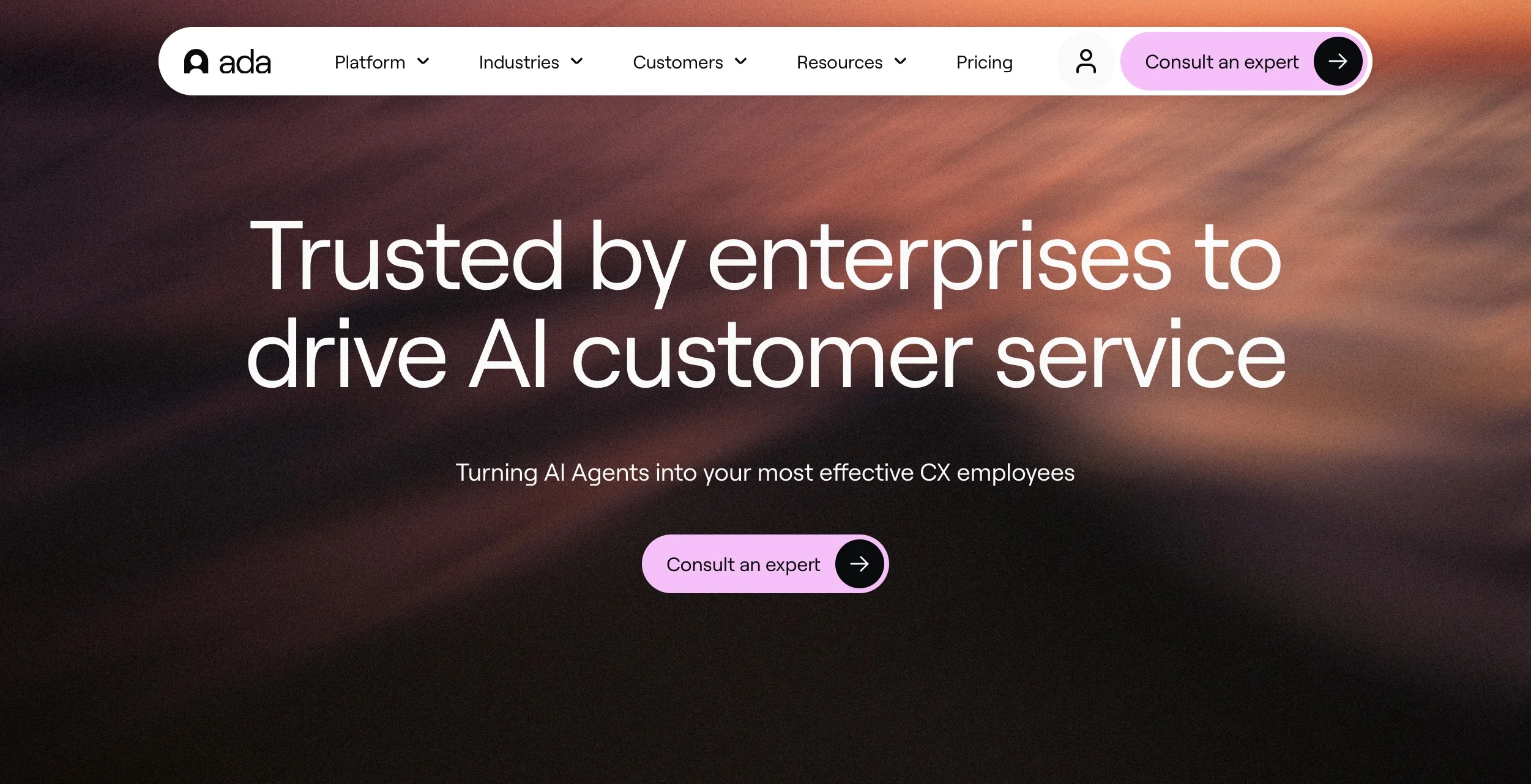
Ada.cx powers AI agents that automate customer service across chat, voice, and email, helping support teams handle complex requests at scale.
Unlike traditional bots that rely on rigid scripts, Ada’s platform was built “AI-first”, meaning its agents can understand intent, trigger workflows, and even escalate to humans when needed, all while maintaining a consistent brand tone.
G2 Rating: 4.6/5 (155 reviews)
Review: “Ada helped our small support team contain the most easy-to-resolve customer inquiries, freeing-up more time for agents to go through our backlog.”
Ada uses a performance-based pricing model, where companies pay based on successful resolutions or interaction volume rather than flat usage fees. Exact pricing depends on the number of monthly conversations, integrations, and deployment channels, but most enterprise plans start in the low six figures annually.
Brands that prioritize customer experience at scale, especially e-commerce, fintech, and telecom companies, where multilingual support and fast automation setup are key.
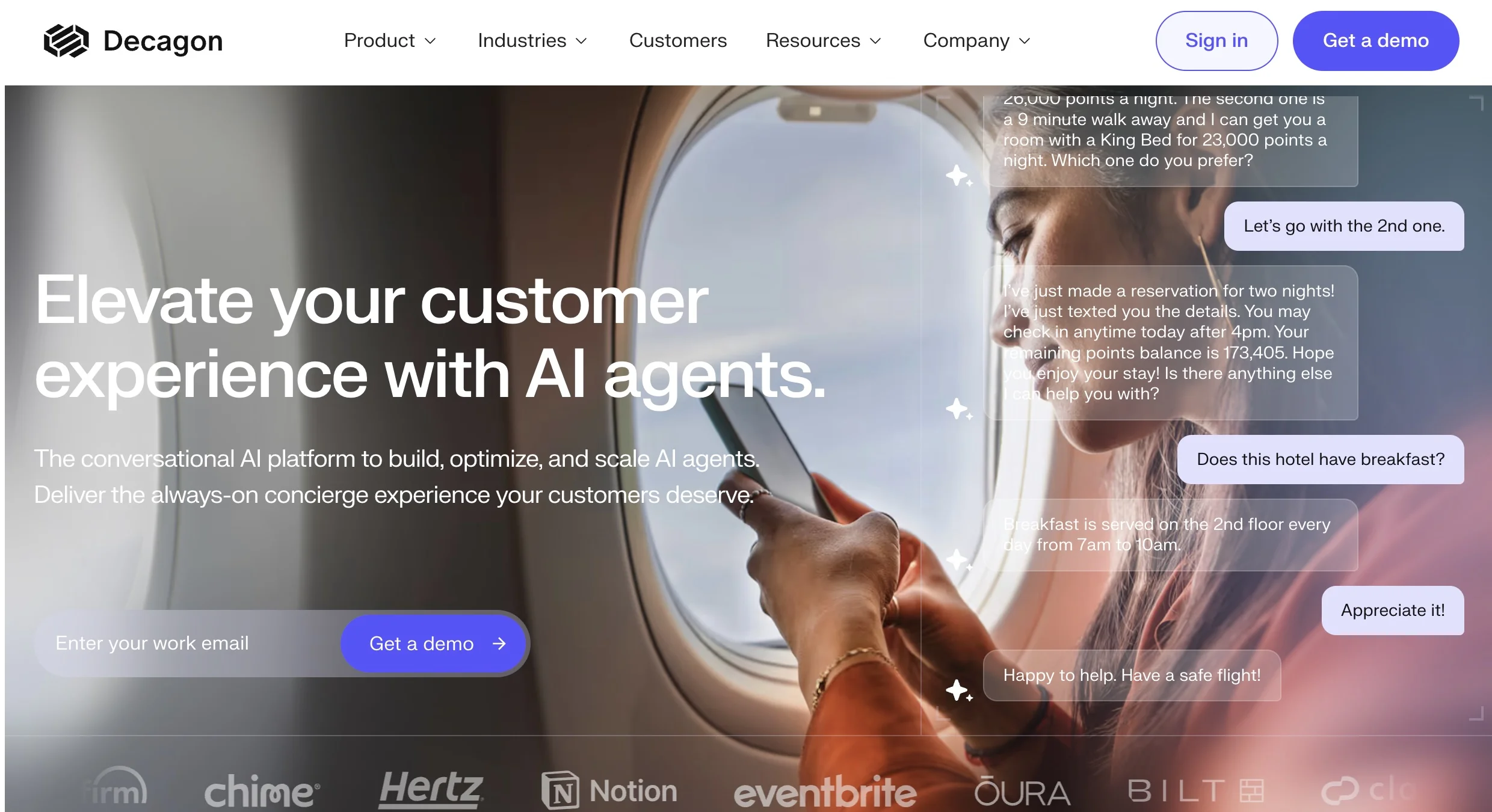
Decagon.ai offers a unified AI engine that auto-resolves customer issues across chat, voice, email, SMS, and custom channels in any language.
Their approach centers on Agent Operating Procedures (AOPs): natural-language instructions that compile into logic, allowing teams to tweak behavior without heavy coding.
Decagon is one of the leading AI platforms, featuring a unified, AI-powered engine that streamlines customer support operations.
Decagon frames pricing around value. Their two main tiers are:
Because Decagon is aimed at enterprise clients with large volumes, their base pricing is custom. In one public review, estimated ranges span $95,000 to $590,900+ per year, depending on complexity, volume, and integrations.
G2 Rating: 4.9/5 (18 reviews)
Review: "The biggest upside of using Decagon isn't simply the assumption of repetitive day-to-day tasks that would normally be done manually, but that Decagon allows us to evaluate data on a much deeper level."
Organizations that demand high customization, transparency, and outcome-driven automation, especially in sectors like fintech, telecom, or SaaS with large support loads.
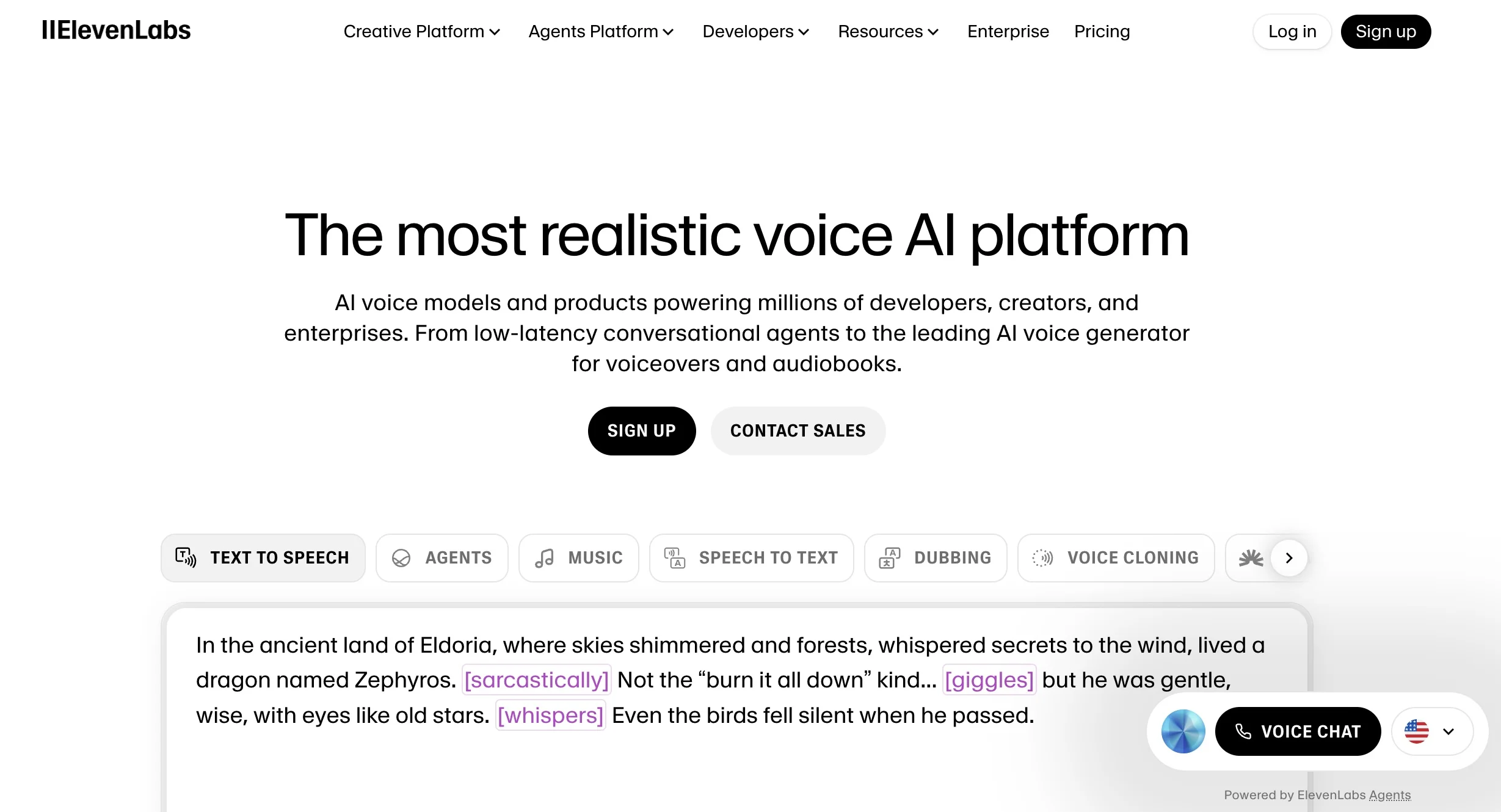
ElevenLabs is best known for its world-class text-to-speech and voice cloning tech, and more recently it’s expanded into conversational AI agents. Their platform can take user input (voice or text), ground it in your data, and produce natural spoken replies.
It’s not yet a full-blown telephony agent system, but it bridges content and voice interaction nicely, especially for brands already working in audio, narration, or voice experiences.
ElevenLabs uses a credit system. You get a bundle of credits (usable for TTS, agents, etc.), and if you exceed them, you buy more.
Example tiers (as of now):
Because it’s usage-based, your total cost will depend heavily on how many agent minutes you use, how much audio you generate, and how premium the voices are.
If your product or brand already has a voice or audio focus (podcasts, narration, gaming, or voice apps) and you want to layer in conversational agents, ElevenLabs is a powerful pick. It’s especially strong when you care deeply about sound quality, expressiveness, and voice branding. But if your priority is full telephony integration, call switching, deep voice workflows, or super predictable pricing, Vapi (or others) might still lead in those domains.

Dialogflow CX is Google’s enterprise conversational AI product.
It enables teams to design agents with stateful flows, visual builders, and native integration into Google Cloud services. It supports both voice and chat, with strong developer flexibility.
Dialogflow CX follows a pay-as-you-go model with published rates: $0.007 per text request and $0.001 per second of audio (when no generative AI is involved).
For features using generative components, the rates rise to $0.012 per text request and $0.002 per audio second.
Additionally, storage beyond a free 10 GiB/month is billed at $5 per GiB. Because pricing varies by edition, request volume, and audio usage, many enterprise deployments still negotiate custom caps or discounts based on scale.
G2 Rating: 4.4/5 (134 reviews)
Review: "Customer support can sometimes be slow or less responsive. In addition, while extensive, some documentation can be difficult to navigate."
Enterprises already operating in Google Cloud that want to build customizable agents with full developer flexibility.
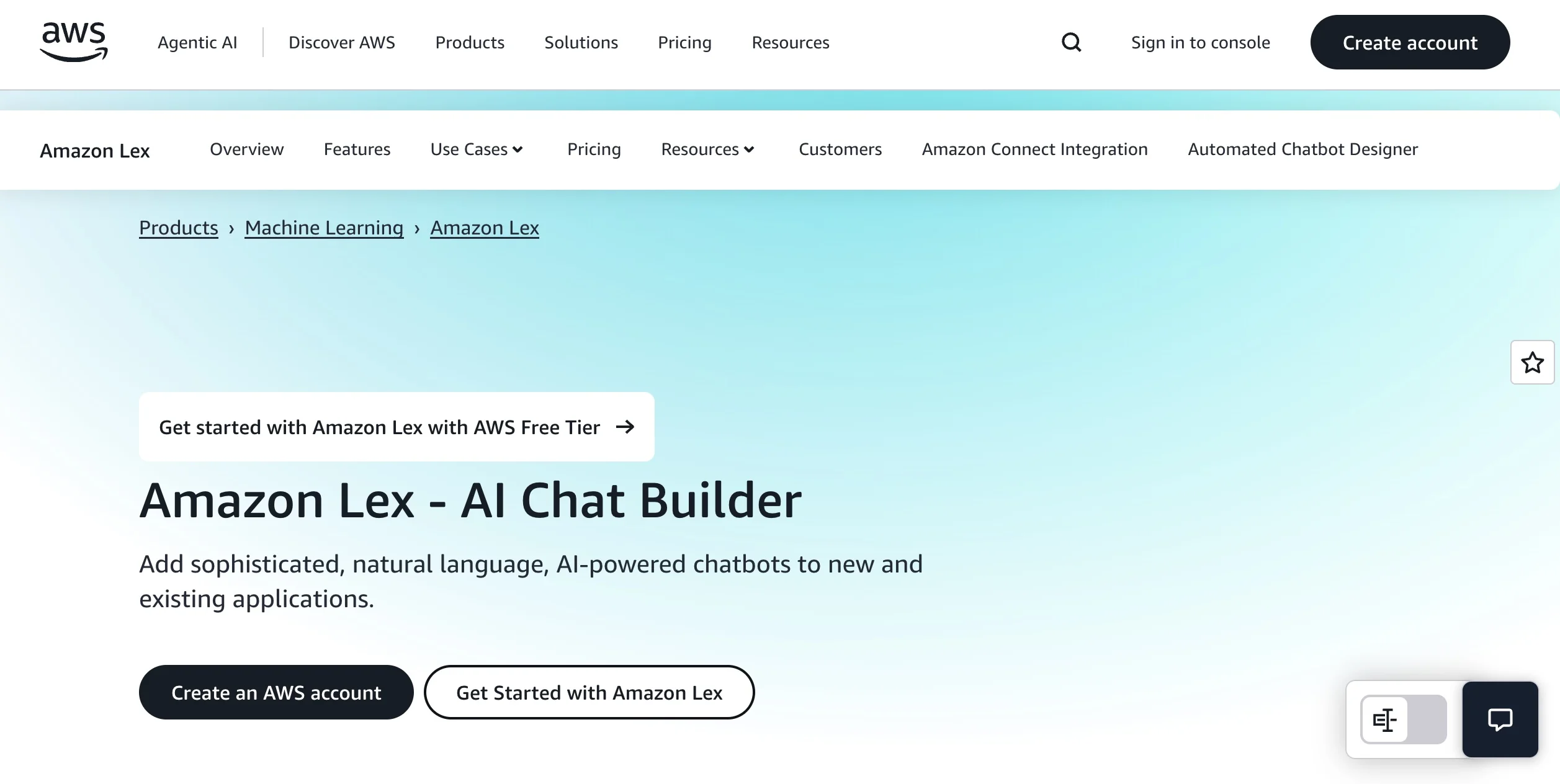
Amazon Lex is AWS’s conversational AI service, offering speech recognition, text-to-speech, and intent handling.
It integrates with AWS infrastructure, enabling businesses to build scalable conversational workflows within their existing cloud environment.
Amazon Lex is one of the leading AI platforms, offering advanced AI-powered features for building conversational interfaces.
Amazon Lex uses a pay-as-you-go pricing model: $0.004 per speech request and $0.00075 per text request (request–response mode).
In streaming conversation mode, it charges $0.0065 per 15-second speech interval for voice interactions. There is no upfront commitment or minimum fee, you pay only for what you use. When launching, AWS offers a Free Tier: 10,000 text requests and 5,000 speech requests per month free for the first year.
G2 Rating: 4.2/5 (37 reviews)
Review: "Lex is easy to configure. Training and configuring the chatbot is simple and easy."
Companies standardized on AWS infrastructure, looking for tight cloud-native integration and developer control.
Sierra has drawn attention for its ambitious vision of brand-aligned, action-taking AI agents, and the market offers no shortage of alternatives.
Each has strengths depending on use case, but Retell AI consistently stands out when the priority is real-time voice performance.
Unlike platforms that bolt voice on after chat, Retell was built voice-first: low-latency infrastructure, transparent usage-based pricing starting at $0.07 per minute, and straightforward deployment that doesn’t require months of engineering.
The result is a solution that scales across industries like healthcare, finance, and logistics without the hidden costs or complexity that often come with Sierra’s outcome-based model.
For enterprises evaluating Sierra alternatives, Retell offers the clearest balance of speed, predictability, and enterprise-grade performance.
Ready to experience it yourself? Start building with Retell today.
See how much your business could save by switching to AI-powered voice agents.
Total Human Agent Cost
AI Agent Cost
Estimated Savings
A Demo Phone Number From Retell Clinic Office
Revolutionize your call operation with Retell.


